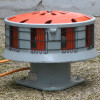E57: Difference between revisions
(Add image from CDS) |
No edit summary |
||
| (11 intermediate revisions by 2 users not shown) | |||
| Line 1: | Line 1: | ||
{{Infobox siren|produced=1957-1992|type=[[Omnidirectional]] [[Electromechanical]]|hp= | {{Infobox siren|produced=1957/1959-1992/present (allegedly)|type=[[Omnidirectional]] [[Electromechanical]]|hp=6.3-6.7 hp (4.7-5 kW)|voltage=220/380|hertz=50|current=3 ph|title=E57|image=E57.png|hz=50/60|preceded=<div> [[L52|L141]] | ||
<div> [[L52]]|succeeded=<div>[[ECL]] | |||
<div>[[ECN]] | |||
<div>[[ECI]]}}The '''Standard Siren 1957''' (German: ''Einheitssirene 1957'', abbreviated '''E57''' or '''E 57'''<ref>Contrary to popular belief, there is no "-" in-between "E" and "57".</ref>) is a simple medium-range omnidirectional siren. It superseded the earlier [[L52|Air Protection Siren 1952]] (German: ''Luftschutzsirene 1952'', abbreviated '''L52''') and [[L52|Air Protection Siren 1941]] (German: ''Luftschutzsirene 1941'', abbreviated '''L141''') as the German "standard siren", and was produced from its introduction in 1957 until its eventual discontinuation in 1992. The E57 is, without a doubt, one of the most well-known German sirens, and it has maintained this status even more than 30 years later after its discontinuation. Thanks to its basic yet rugged design, it was widely installed throughout Germany and exported to various other nations. The E57 also served other purposes both during and after its production run, often used as an alarm to alert the fire brigade. The E57 spawned a countless number of imitators, such as the VEM DS977 and VILMA Motors NEVA/VILMA 55, and its design's influence can be found throughout Europe. | |||
== History | == History == | ||
In | [[File:Helin E57.png|thumb|160x160px|A privately owned HELIN-built E57, with its fibreglass housing removed.]] | ||
[[File:E57 rotor.jpg|thumb|placeholder image|160x160px]] | |||
In the mid-1950s, Elektror began to draft a brand-new standard siren which would offer superior performance and longevity compared to the previous standard sirens. This came about after the recent division of Germany and fear of an imminent attack brought about by the Eastern Bloc. Elektror had earlier created the L141/L52, which the new siren would ultimately supersede. This project ultimately resulted in the creation of the E57, which conformed with the German Institute for Standardization (German: ''Deutsches Institut für Normung'', abbreviated '''DIN''')'s standardization order for the design of air raid sirens (DIN 41096). This standardization came about in 1952 and resulted in the creation of the L52 to meet its new requirements. The E57 was designed as a relatively maintenance free siren with a simple design; its development was primarily focused on prioritizing a longer life span rather than sound output. | |||
After being finalized in 1957 the E57 was officially put into production in 1959, with the 1st units going up sometime later that year. An E57-like counterpart, named the S385, was also developed slightly beforehand in 1957/1958 by VEB Elektromotorenwerk Thurm in East Germany; it was the designated standard siren of the GDR and saw use elsewhere in the Eastern Bloc. The S385 was later superseded by the [[DS 977|Three Phase Siren 977]] (German: ''Drehstrom-Sirene 977'', abbreviated '''DS 977'''), a creation of VEB Elektromotorenwerk Grünhain, in 1967, and rivalled the E57 in terms of popularity. Elektror was later joined by Siemens-Schuckert, [[HELIN]], and eventually Roland Sirenenbau and Luz Sirene in manufacturing the E57. While Elektror and Roland casted their parts themselves, Siemens and HELIN often outsourced production of their sirens' rotors and stators to Garthe, a casting company based in Ennepetal. Elektror also used Garthe's parts for a brief period, though transitioned away from them in the mid-1960s. | |||
Regardless of uniformity problems, the E57 was an immediate success following its introduction, and the number of units installed rose exponentially throughout the 60s and 70s. Siemens-Schuckert ended production of the E57 during the 1960s for an unknown reason. 1975 was an eventful year for the siren; during that time, DIN 41096 expired and HELIN and Roland stopped producing the E57. A company named ''Apparatus Construction and Electrical Systems GmbH'' (German: ''Apparatebau u. Elektroanlagen GmbH'', abbreviated '''ABEG''') later became the service and maintenance company for existing E57 sirens. ABEG primarily refurbished and reinstalled older E57s from the original manufacturers, and even built their own units (elaborated more on in the "design" section). In 1979, HÖRMANN Warnsysteme, a giant in the German siren industry renowned for their lineup of [[HÖRMANN HLS|High-Performance Sirens]] (German: ''Hochleistungssirene'', abbreviated '''HLS''') acquired the Santa Cruz, CA-based Raytek Technologies. | |||
Raytek was a HÖRMANN affiliate beforehand and sold both the electronic ECL and electromechanical E57. The HLS was a fierce competitor to the E57; its larger audible radius meant that only 1 HLS could be installed in place of nearly 30 E57s. HÖRMANN likely took over ABEG's service operations in the 1980s (with apparent exact dates of 1982, 1983, and 1986, although none of these are confirmed), as HÖRMANN-badged units began to surface around this period of time. Towards the fall of the Berlin Wall, E57s were imported to East Germany, both to cover siren-less areas and to replace older DS977s that had since fallen inactive. Very few E57s exist today in once was what the GDR, and the ones that do were imported during this time or shortly after the fall of the Berlin Wall; many areas in eastern Germany still retain their old DS977s. The E57 was finally discontinued in by Elektror in 1992 after the end of the Cold War. | |||
All E57s installed from this point forward were refurbished units from HÖRMANN. After Germany's civil defense warning offices were disbanded, the ownership of these sirens turned to the municipalities of which they were installed in. Many E57s saw new lives primarily as fire sirens. In 2004, [[HÖRMANN America]], which was part of an ongoing at the time effort to expand HÖRMANN's influence, introduced a variant of the E57 named the ''E57USA'', which were partially modified for the American market but still retained largely the same design. It is unknown how many E57USAs were sold, but very few still exist; they were discontinued in 2009 when HÖRMANN America became Alerting Solutions, Inc. (ASI). HÖRMANN Warnsysteme continued to supply E57 units until late 2012, when the siren was removed from their website after an overhaul and effectively replaced by the [[ECN]] and [[ECI]]. HELIN allegedly still produces the E57; although their main website mentions it as an option, no further mentions of the siren can be found on either HELIN proper's website or HELIN Sirens' website. | |||
== Design == | |||
[[File:E57 no roof.jpg|thumb|An E57 without its protective roof.|160x160px]]The E57 consists of a 9-port rotor and stator, with a grille carried over from the L52 protecting debris from entering the siren. The rotor on the E57 had thicker walls than that of the L52s, slightly improving the siren's range. A flange below the stator directs the siren's sound downwards and outwards and has a rotation arrow cast on, which displays the correct way the rotor was supposed to spin. This arrow was also present on the L52 but was instead cast onto the motor. The E57 is powered by a 220/380 V 5 kW (6.7 hp) asynchronous 3 ph electric motor underneath the stator driving the rotor at around 2800 rpm, brought up to this speed around 2-4 seconds after activation. The color of the stator and the motor is RAL 7026 (granite grey), as standardized by DIN 41096. The siren's rotor is coated in a varying color of polyamide paint, as an exact one was not specified in the DIN's standardization. The motor shaft's countersink is rounded on the E57, whereas the L52's was square. The E57 lacks protective conductor connections of any kind, unlike its predecessor; this was likely a casualty of making the siren as simple as possible to produce and install. Like the L52, the E57 was designed with inexpensiveness and mass-producibility in mind. It achieved this through several means; Its most notable feature, the large protective roof shielding the siren from the elements, is constructed out of fiberglass-reinforced plastic instead of steel, contributing to a less costly siren. This also makes the siren lighter overall and prevents the roof from warping and being dented, as can be seen on many L141/L52 units. [[File:E57 no rotor.jpg|thumb|An E57 without its rotor.|160x160px]] | |||
[[File:E57 rotor.jpg|thumb|The aforementioned E57 unit's rotor.|160x160px]] | |||
The holes drilled into the stator used for attaching the grille in place on the L141 are not present on the E57, simplifying its production further. A triangular base borrowed from the siren's predecessor, with 3 holes in each corner, allows the E57 to be bolted to a flat surface. The flanges on the sides of the motor that connect it to the base of the siren were made straight on the E57, compared to the L52 where they were curved. Conforming to DIN 41097, which standardized mounting methods for air raid sirens, tripod, and simple pole roof mount designs were available to purchase with the E57, and it could also be fixed to a tall steel pole. The E57's design was improved upon by ABEG in 1975 to account for a minor design flaw; a washer with a sealing ring was installed on the motor shaft, below the nuts that hold the stator in place. This was done to prevent water from accumulating around the space in between the rotor and the shaft. This would ultimately result in the motor being flooded, a fate that many pre-1975 units shared after their protective roofs had been blown away or uninstalled for whatever reason. E57s that have been restored by ABEG can be easily identified by the ABEG tag on the motor, although without a view of the tag, they become significantly harder to identify. ABEG often used spare parts in their storage, collected from all of the other manufacturers' E57s. As a result, ABEG-restored E57s often utilize a mix of various E57 parts and can be mistaken as products of the other manufacturers or appear exactly identical for that matter. | |||
HÖRMANN was slightly more uniform when building E57s, but HÖRMANN-restored E57s are still often hard to identify without closer inspection. HÖRMANN also produced the controllers for all E57 units from the 1980s onwards; the original controls that E57 used are scarce today, as these were not as mass produced as HÖRMANN's, which made non-HÖRMANN controls far less common. Many of the original controllers meant for the E57 were painted in a wine-red color and included pull tabs. Despite each seeming relatively identical, the E57 had a varying number of manufacturing differences depending on which company produced the exact unit, and some manufacturers were inconsistent with the way the siren was designed, making it extremely difficult to differentiate what manufacturer made what unit. The E57 was never 100% standardized down to the last detail; only its approximate dimensions and configurations were specified in DIN 41096, and the fact that multiple manufacturers independent of each other produced them separately would make it very hard for each and every unit to be identical. Some E57 units even have differing rotor diameters, meaning that not all E57 rotors are interchangeable. Additionally, some of HELIN's E57s had roof mounts which weren't recessed into the stator, unlike most of the other manufacturers. A few Siemens-Schuckert produced sirens had a shorter rim above the stator, with longer ports. Siemens E57s also had 4.7 kW (6.3 hp) motors, resulting in a lower pitch and slower windup compared to other units (the less-powerful motor had no effect on the siren's overall volume). A more detailed comparison of E57s from 3 of the manufacturers is below. | |||
{| class="wikitable" | |||
|+Elektror, HELIN, and Siemens-Schuckert E57s | |||
!Manufacturer | |||
!Rotor weight | |||
!Horsepower | |||
!Sound frequency | |||
|- | |||
|Elektror | |||
|6.3-8.5 kg | |||
|6.7 hp (5 kW) | |||
|430-437 Hz | |||
|- | |||
|[[File:Helin E57.png|center|frameless|100x100px]]<center>HELIN<center/> | |||
|6.3-7.5 kg | |||
|6.7 hp (5 kW) | |||
|422-429 Hz | |||
|- | |||
|Siemens-Schuckert | |||
|6.0-7.6 kg | |||
|6.3 hp (4.7 kW) | |||
|420-432 Hz | |||
|} | |||
== References == | == References == | ||
<references /> | <references /> | ||
Latest revision as of 18:59, 27 October 2024
| E57 | |
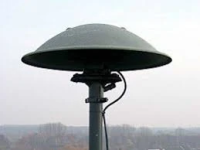
| |
| Produced | 1957/1959-1992/present (allegedly) |
|---|---|
| Type | Omnidirectional Electromechanical |
| Frequency | 50/60 Hz |
| Horsepower | 6.3-6.7 hp (4.7-5 kW) |
| Voltage | 220/380 V 3 ph |
| Preceded by | |
| Succeeded by | |
The Standard Siren 1957 (German: Einheitssirene 1957, abbreviated E57 or E 57[1]) is a simple medium-range omnidirectional siren. It superseded the earlier Air Protection Siren 1952 (German: Luftschutzsirene 1952, abbreviated L52) and Air Protection Siren 1941 (German: Luftschutzsirene 1941, abbreviated L141) as the German "standard siren", and was produced from its introduction in 1957 until its eventual discontinuation in 1992. The E57 is, without a doubt, one of the most well-known German sirens, and it has maintained this status even more than 30 years later after its discontinuation. Thanks to its basic yet rugged design, it was widely installed throughout Germany and exported to various other nations. The E57 also served other purposes both during and after its production run, often used as an alarm to alert the fire brigade. The E57 spawned a countless number of imitators, such as the VEM DS977 and VILMA Motors NEVA/VILMA 55, and its design's influence can be found throughout Europe.
History
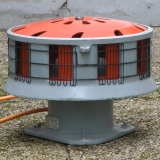
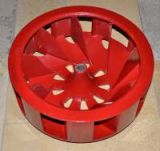
In the mid-1950s, Elektror began to draft a brand-new standard siren which would offer superior performance and longevity compared to the previous standard sirens. This came about after the recent division of Germany and fear of an imminent attack brought about by the Eastern Bloc. Elektror had earlier created the L141/L52, which the new siren would ultimately supersede. This project ultimately resulted in the creation of the E57, which conformed with the German Institute for Standardization (German: Deutsches Institut für Normung, abbreviated DIN)'s standardization order for the design of air raid sirens (DIN 41096). This standardization came about in 1952 and resulted in the creation of the L52 to meet its new requirements. The E57 was designed as a relatively maintenance free siren with a simple design; its development was primarily focused on prioritizing a longer life span rather than sound output.
After being finalized in 1957 the E57 was officially put into production in 1959, with the 1st units going up sometime later that year. An E57-like counterpart, named the S385, was also developed slightly beforehand in 1957/1958 by VEB Elektromotorenwerk Thurm in East Germany; it was the designated standard siren of the GDR and saw use elsewhere in the Eastern Bloc. The S385 was later superseded by the Three Phase Siren 977 (German: Drehstrom-Sirene 977, abbreviated DS 977), a creation of VEB Elektromotorenwerk Grünhain, in 1967, and rivalled the E57 in terms of popularity. Elektror was later joined by Siemens-Schuckert, HELIN, and eventually Roland Sirenenbau and Luz Sirene in manufacturing the E57. While Elektror and Roland casted their parts themselves, Siemens and HELIN often outsourced production of their sirens' rotors and stators to Garthe, a casting company based in Ennepetal. Elektror also used Garthe's parts for a brief period, though transitioned away from them in the mid-1960s.
Regardless of uniformity problems, the E57 was an immediate success following its introduction, and the number of units installed rose exponentially throughout the 60s and 70s. Siemens-Schuckert ended production of the E57 during the 1960s for an unknown reason. 1975 was an eventful year for the siren; during that time, DIN 41096 expired and HELIN and Roland stopped producing the E57. A company named Apparatus Construction and Electrical Systems GmbH (German: Apparatebau u. Elektroanlagen GmbH, abbreviated ABEG) later became the service and maintenance company for existing E57 sirens. ABEG primarily refurbished and reinstalled older E57s from the original manufacturers, and even built their own units (elaborated more on in the "design" section). In 1979, HÖRMANN Warnsysteme, a giant in the German siren industry renowned for their lineup of High-Performance Sirens (German: Hochleistungssirene, abbreviated HLS) acquired the Santa Cruz, CA-based Raytek Technologies.
Raytek was a HÖRMANN affiliate beforehand and sold both the electronic ECL and electromechanical E57. The HLS was a fierce competitor to the E57; its larger audible radius meant that only 1 HLS could be installed in place of nearly 30 E57s. HÖRMANN likely took over ABEG's service operations in the 1980s (with apparent exact dates of 1982, 1983, and 1986, although none of these are confirmed), as HÖRMANN-badged units began to surface around this period of time. Towards the fall of the Berlin Wall, E57s were imported to East Germany, both to cover siren-less areas and to replace older DS977s that had since fallen inactive. Very few E57s exist today in once was what the GDR, and the ones that do were imported during this time or shortly after the fall of the Berlin Wall; many areas in eastern Germany still retain their old DS977s. The E57 was finally discontinued in by Elektror in 1992 after the end of the Cold War.
All E57s installed from this point forward were refurbished units from HÖRMANN. After Germany's civil defense warning offices were disbanded, the ownership of these sirens turned to the municipalities of which they were installed in. Many E57s saw new lives primarily as fire sirens. In 2004, HÖRMANN America, which was part of an ongoing at the time effort to expand HÖRMANN's influence, introduced a variant of the E57 named the E57USA, which were partially modified for the American market but still retained largely the same design. It is unknown how many E57USAs were sold, but very few still exist; they were discontinued in 2009 when HÖRMANN America became Alerting Solutions, Inc. (ASI). HÖRMANN Warnsysteme continued to supply E57 units until late 2012, when the siren was removed from their website after an overhaul and effectively replaced by the ECN and ECI. HELIN allegedly still produces the E57; although their main website mentions it as an option, no further mentions of the siren can be found on either HELIN proper's website or HELIN Sirens' website.
Design
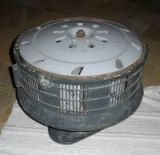
The E57 consists of a 9-port rotor and stator, with a grille carried over from the L52 protecting debris from entering the siren. The rotor on the E57 had thicker walls than that of the L52s, slightly improving the siren's range. A flange below the stator directs the siren's sound downwards and outwards and has a rotation arrow cast on, which displays the correct way the rotor was supposed to spin. This arrow was also present on the L52 but was instead cast onto the motor. The E57 is powered by a 220/380 V 5 kW (6.7 hp) asynchronous 3 ph electric motor underneath the stator driving the rotor at around 2800 rpm, brought up to this speed around 2-4 seconds after activation. The color of the stator and the motor is RAL 7026 (granite grey), as standardized by DIN 41096. The siren's rotor is coated in a varying color of polyamide paint, as an exact one was not specified in the DIN's standardization. The motor shaft's countersink is rounded on the E57, whereas the L52's was square. The E57 lacks protective conductor connections of any kind, unlike its predecessor; this was likely a casualty of making the siren as simple as possible to produce and install. Like the L52, the E57 was designed with inexpensiveness and mass-producibility in mind. It achieved this through several means; Its most notable feature, the large protective roof shielding the siren from the elements, is constructed out of fiberglass-reinforced plastic instead of steel, contributing to a less costly siren. This also makes the siren lighter overall and prevents the roof from warping and being dented, as can be seen on many L141/L52 units.
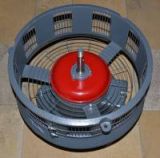

The holes drilled into the stator used for attaching the grille in place on the L141 are not present on the E57, simplifying its production further. A triangular base borrowed from the siren's predecessor, with 3 holes in each corner, allows the E57 to be bolted to a flat surface. The flanges on the sides of the motor that connect it to the base of the siren were made straight on the E57, compared to the L52 where they were curved. Conforming to DIN 41097, which standardized mounting methods for air raid sirens, tripod, and simple pole roof mount designs were available to purchase with the E57, and it could also be fixed to a tall steel pole. The E57's design was improved upon by ABEG in 1975 to account for a minor design flaw; a washer with a sealing ring was installed on the motor shaft, below the nuts that hold the stator in place. This was done to prevent water from accumulating around the space in between the rotor and the shaft. This would ultimately result in the motor being flooded, a fate that many pre-1975 units shared after their protective roofs had been blown away or uninstalled for whatever reason. E57s that have been restored by ABEG can be easily identified by the ABEG tag on the motor, although without a view of the tag, they become significantly harder to identify. ABEG often used spare parts in their storage, collected from all of the other manufacturers' E57s. As a result, ABEG-restored E57s often utilize a mix of various E57 parts and can be mistaken as products of the other manufacturers or appear exactly identical for that matter.
HÖRMANN was slightly more uniform when building E57s, but HÖRMANN-restored E57s are still often hard to identify without closer inspection. HÖRMANN also produced the controllers for all E57 units from the 1980s onwards; the original controls that E57 used are scarce today, as these were not as mass produced as HÖRMANN's, which made non-HÖRMANN controls far less common. Many of the original controllers meant for the E57 were painted in a wine-red color and included pull tabs. Despite each seeming relatively identical, the E57 had a varying number of manufacturing differences depending on which company produced the exact unit, and some manufacturers were inconsistent with the way the siren was designed, making it extremely difficult to differentiate what manufacturer made what unit. The E57 was never 100% standardized down to the last detail; only its approximate dimensions and configurations were specified in DIN 41096, and the fact that multiple manufacturers independent of each other produced them separately would make it very hard for each and every unit to be identical. Some E57 units even have differing rotor diameters, meaning that not all E57 rotors are interchangeable. Additionally, some of HELIN's E57s had roof mounts which weren't recessed into the stator, unlike most of the other manufacturers. A few Siemens-Schuckert produced sirens had a shorter rim above the stator, with longer ports. Siemens E57s also had 4.7 kW (6.3 hp) motors, resulting in a lower pitch and slower windup compared to other units (the less-powerful motor had no effect on the siren's overall volume). A more detailed comparison of E57s from 3 of the manufacturers is below.
References
- ↑ Contrary to popular belief, there is no "-" in-between "E" and "57".
